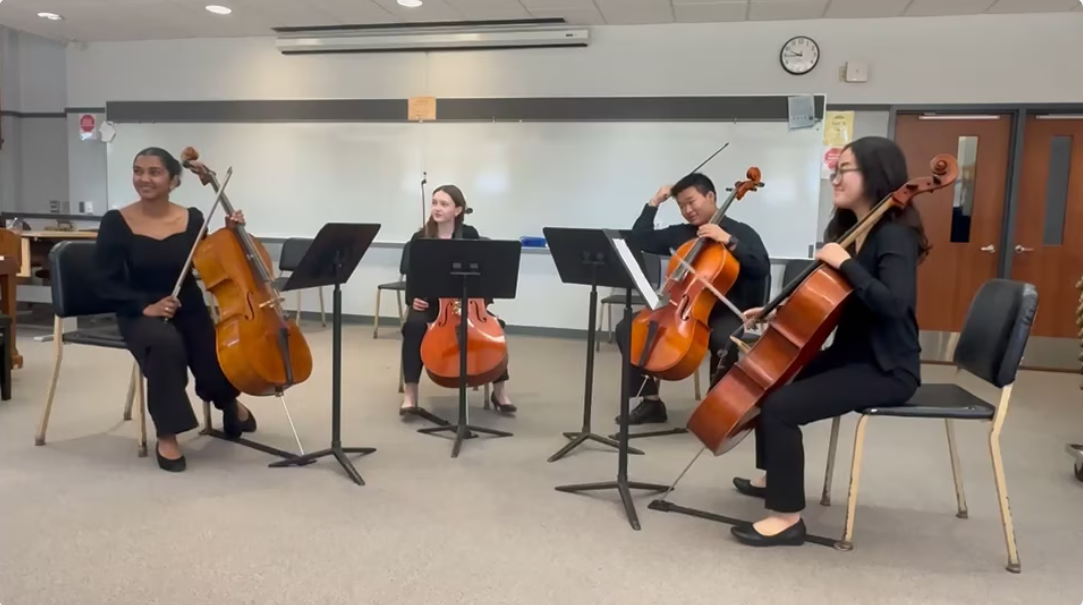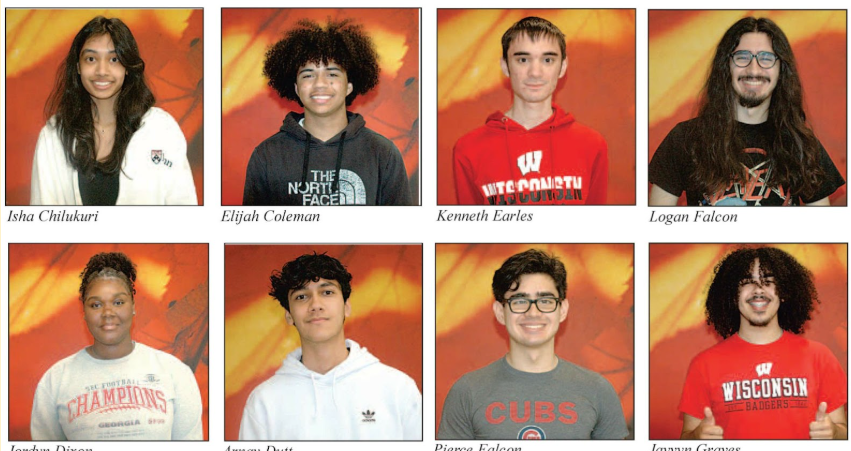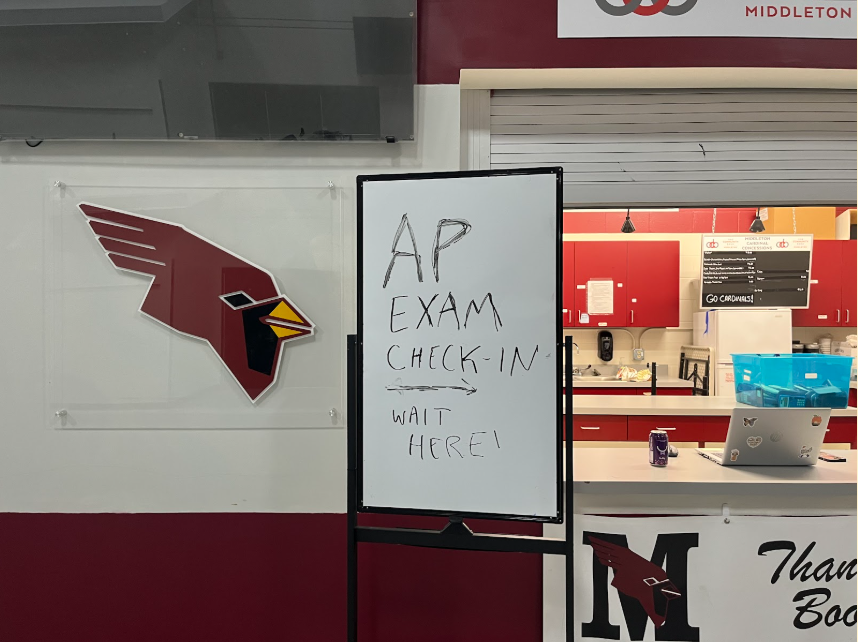Overture’s Les Misérables Leaves Lasting Impression
April 13, 2018
There are few Broadway shows with as rich of a story and score as Claude-Michel Schönberg and Alain Boublil’s Les Misérables, one of the longest-running shows in history. The show, based on the 1845 novel of the same name by French author Victor Hugo, tells the story of Jean Valjean, a man imprisoned for the crime of stealing a loaf of bread for his starving nephew. After 19 years in prison, Valjean breaks parole and turns his life around, becoming a successful businessman and mayor of his town, using the name Monsieur Madeleine. However, after Inspector Javert, a policeman who had known Valjean when he was a prisoner, discovers his true identity, Valjean must again go on the run. Along the way, Valjean ends up taking custody of the child of one of his workers, named Fantine. He raises the child, called Cosette, as his own daughter. Les Misérables tells the story of the rest of Valjean’s life as he flees from Javert, and also tells the story of Cosette, as she falls in love with the young revolutionary Marius.
With such rich story material, the show is a vocally difficult and emotionally challenging piece for any cast. Because Les Misérables is sung-through (meaning that there is no dialogue, only songs), it can be difficult to follow the story, and to some viewers, it might seem boring. However, there is so much to this musical that makes it an absolute classic. I was able to see Les Misérables on Sunday night (closing night) at Overture Center for the Arts in Madison, WI, and there was plenty to love about the production.
The show started with a visually striking image: prisoners on the “chain gang” rowing a boat. All of the soloists in “Work Song” were vocally impressive, and the song set the tone for the story nicely. I enjoyed how lighting, as well as a screen with projected images of water, made the “boat” seem more realistic and ominous. The screen was used effectively over the course of the performance to show depth and change the setting.
The next moment that stood out was Fantine’s “I Dreamed a Dream’, arguably the most famous song from Les Misérables. The song is very vocally challenging, and hard to act without going over the top. I thought that Mary Kate Moore did an admirable job with the song, hitting all of the difficult notes with power. However, I thought that her performance was all at a similar volume, and I wished she had varied her dynamics a little more. On another note, her voice tone/style seemed off to me. Les Misérables is usually performed with somewhat affected voices, because of the setting and classical style of the show. Moore seemed too “American” to me, and her inflection didn’t fit in with the other performers’ vocal choices.
“Confrontation,” a fight between Javert (Josh Davis) and Valjean (Nick Cartell), is actually one of my favorite songs in the show. However, in this production, the poor diction made it difficult to understand both characters. The song sets up a lot of the conflict that is the focus of the show, so it was disappointing that it was so difficult to understand. I noticed this in many of Javert’s songs — they were sung with excellent tone but were very difficult to comprehend.
A duo of side characters, Monsieur and Madame Thenardier, provided some much needed comic relief with the rousing “Master of the House,” in which they sing about how they steal from the guests at their inn. The number was raucous and rousing, and the set was used very effectively. Again, though, it was hard to understand the lyrics. In this song, the visuals make the story pretty clear, so the difficult to understand lyrics were not as distracting. Allison Guinn, as Madame Thenardier, gave a very entertaining performance — her diction was clear, and she committed wholeheartedly to the character. Her over-the-top portrayal of the greedy, conniving woman was one of the funniest parts of a show which and with a name like Les Misérables, there are not many lighter moments.
The end of Act One comes with the rousing “One Day More,” in which all the characters discuss what will happen to them the next day. There are so many layers to this masterful song, and I thought that the balance between all of the different parts was excellent. However, three of the main parts (Cosette, Marius, and the Thenardiers) were singing from small windows, designed to look like apartment balconies, during this song. The choice to do this made them seem much more insignificant. The song is often done with everyone standing together on the stage, a striking image, but by scattering the principal characters, this was disrupted. The vocal power was there, though, and it was a strong closing to the act.
The second act begins with two songs by the character Eponine. Eponine (Emily Bautista) is in love with Marius, but it is unrequited. “On My Own,” tells the story of Eponine imagining her life with Marius, but realizing they will never be together. Eponine returns to the barricades to fight alongside Marius in the revolution but is shot and killed soon after arriving. As she dies, Marius holds her and comforts her in her final moments. She sings “A Little Fall of Rain,” in which she tells him that his being there is all that she needs, after which she dies in his arms.
This song is one of the most heart-breaking parts of the entire show if done well. In this production, though, I was unimpressed with the scene. While she sang, Eponine kept re-adjusting her sitting position, which led to Marius seeming as if he was trying to restrain her rather than comfort her. She seemed uncomfortable and was moving around to the point where it became distracting. The whole song was more awkward than tender, and the emotional impact fell flat because of it.
The most notable and moving moment of the show came with Cartell’s rendition of “Bring Him Home,” in which Valjean prays that Marius will be safe during the coming fight. The vocals were soaring and delicate, and Cartell’s falsetto was absolutely beautiful. He also showed off his belt range at the end of the piece. Vocally, it was the most impressive moment of the show.
One of the most conflict-filled and crucial moments of the show comes during the revolution. Javert, working for the police/government, infiltrates the revolutionaries as a spy. Valjean, fighting the revolution, recognizes him immediately. When the revolutionaries discuss what to do with their prisoner, Valjean requests that he be given control of the man. Instead of killing Javert, Valjean lets him go free. Unable to deal with this merciful act, Javert ultimately decides to kill himself, in the song “Soliloquy.” Because of Davis’ diction issues, this song was largely incomprehensible. The audience was left confused as to why Javert killed himself — for such an important part of the plot; it was disappointing that the lyrics were not more clear.
Les Misérables ends with the marriage of Cosette and Marius, and the death of Valjean, now an old man. The scene was touching, and the staging of the end of the show was strong. The final number was appropriately grand and triumphant, with impressive vocal power from the entire cast.
One factor that may have affected the vocal performances was the fact that the show I saw was the second of the day — there was a matinee performance earlier in the afternoon. Since this is such a vocally demanding show, it is very difficult to do two shows in one day.
Apart from the performance, my only other critique is about the set/staging of the show. I wish that the stage would have been more open — the small playing space resulted in a cramped feeling during some of the scenes. Overall, though, scenery and lighting were used very effectively, whether it be barricades rolling in to create the revolution or the seedy inn of the Thenardiers. The show was thoroughly enjoyable, and the lush score and talented cast made for a moving and engaging show. The beautiful story and impactful performance were well-received by Madison audiences, who rose to a standing ovation on closing night.













